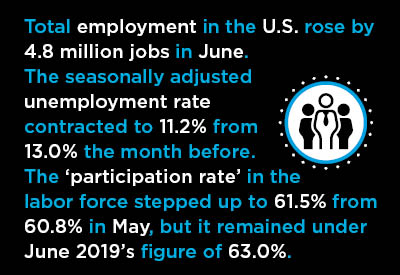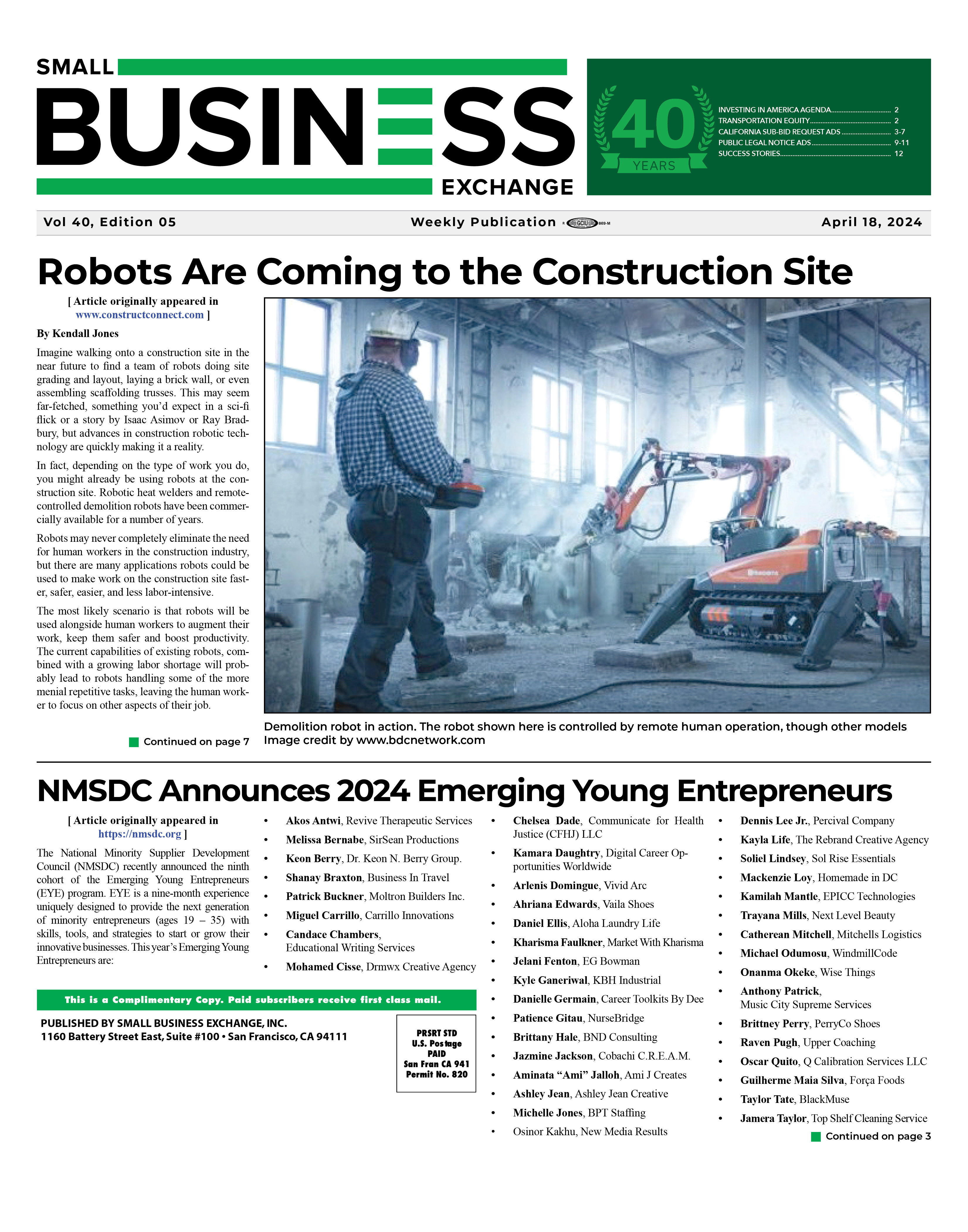U.S. Economy Claws Back 29% of Earlier Big Drop in Jobs
07/03/2020
[ Article was originally posted on www.constructconnect.com ] With today’s June Employment Situation report from the Bureau of Labor Statistics (BLS), the U.S. economy has now clawed back 29% of the total number of jobs lost in March and April, when shelter-at-home directives were first enacted to deal with the coronavirus outbreak. 
February was the last month when the total employment picture in America was ‘normal’. Two months later, with April’s labor market statistics, the total number of jobs in the country was down by 20.5 million. The percentage change in total employment from February to April was -13.5%. While far from being rosy, the jobs numbers are perking up a bit. Staged re-openings in states are the reason. Whereas nation-wide total employment was -20.5 million jobs in April versus February, it is now -14.6 million (again, versus February). And while the percentage change in total employment in April compared with February was -13.5%, it is currently -9.6%. The numbers for ‘total’ and industrial sub-sectors are set out in Table 1.
Construction Leads in Employment Reclamation The four industrial sub-sectors that have reclaimed the largest shares of their February-to-April job losses have been construction, 51.6%; manufacturing, 43.1%; retail, 39.6%; and leisure and hospitality, 36.9%. Construction has gone from -975,000 jobs in April versus February to -472,000 in June (versus February) and from -12.8% to -6.2%. Manufacturing has shifted from -1.330 million jobs to -757,000 and from -10.4% to -5.9%. Retail has reduced its jobs shortfall from -2.107 million to -1.273 million and from -13.5% to -8.1%. Leisure and hospitality – which includes hotels and motels, plus bars and restaurants – has improved from -7.653 million to -4.827 million and from -46.8% to -28.6%. Two sectors, information services and government, are presently seeing even worse employment levels than in April. Jobless Rate Improves to 11.2% The level of total employment in the country rose by 4.8 million jobs in June. The seasonally adjusted unemployment rate contracted to 11.2% from 13.0% the month before. The ‘participation rate’ in the labor force stepped up to 61.5% from 60.8% in May, but it remained under June 2019’s figure of 63.0%. Among industrial sub-sectors, the largest nominal jobs increase month to month in June occurred in ‘leisure and hospitality’, +2.088 million. Second place went to retail trade, +740,000, with third spot claimed by ‘education and health’, +568,000. ‘Leisure and hospitality’ also had the largest month-to-month percentage increase in employment in June, at +21.0%. The runner-up sector, retail trade, was far back, with a gain of +5.4%. Government managed a +33,000 uptick in employment in June, all at the local level, +57,000 jobs. Staffing in Washington stayed steady (+1,000), while the states said good-bye to personnel (-25,000). June’s not seasonally adjusted (NSA) unemployment rate in construction was 10.1%, down from 12.7% in May, but a far cry from June 2019’s 4.0%. The most notable change in an unemployment rate among industrial sub-sectors in the latest month was registered by ‘mining, quarrying and oil and gas extraction’, ? i.e., a deteriorated to 17.8% from 8.4% in May and only 3.2% in June 2019. The full-time unemployment rate in America is currently 10.4%, with part-time at 14.7%. The unemployment rate among 20- to 24-year-olds (both sexes) is 19.0%; among 16- to 19-year-olds, 23.2%. Young adults have been bearing the brunt of the jobs collapse. Unemployment Insurance Picture Still Looks Grim The initial jobless claims number in the last five weeks has dipped below 2.0 million, but it has stayed above 1.4 million. Prior to March 21 of this year, it was consistently below 300,000. The cumulative total of initial jobless claims over the past 15 weeks has been 48.7 million.
The number of individuals claiming unemployment insurance on an ongoing (as opposed to temporary or short-term) basis is 19.2 million. Less than two million was the usual level before the pandemic came to town and turned everything upside down. Back To News |
|
|
|
ABOUT SBE Inc.
Small Business Exchange Inc., is the ultimate business information hub for small businesses, disadvantaged, Asian, Black, Hispanic Women and Disabled Western-owned Business. Founded in 1984 by Gerald W. Johnson and Valerie, Voorhies, SBE, has been working for over two decades to provide businesses with the most powerful tools available and accurate, up-to-date information about contract opportunities in the public and private marketplaces. CONTACT
Small Business Exchange, Inc.
Phone: 415-778-6250
© 2024 Small Business Exchange, Inc.
|
||
|
|
U.S. Economy Claws Back 29% of Earlier Big Drop in Jobs
07/03/2020
Back To News |
|

.png)



